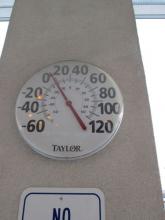Update
Teacher in the Field is Cancelled
Due to unforeseen circumstances, Obed Fulcar will not be able to travel to South Pole Station with the IceCube project. The IceCube team will still be deploying and working at the station. You can learn more about the IceCube project at the IceCube project website.
Diario en Español!:
Para acceder la versión en español de cada “diario” haga click en la pestaña "Journal Tab" en la parte de arriba de esta página. Después seleccione un diario haciendo click en la pestaña "Read Full Journal Entry" alado de cada foto. Va a acceder a ese diario. Haga click en la pestaña "Translation" y les llevará a la versión español de ese diario.
What Are They Doing?
 Tunnel under the Ice Cube Neutrino Observatory
Tunnel under the Ice Cube Neutrino Observatory
How do you find something that isn't directly visible? That's the challenge faced by the team that developed the IceCube neutrino detector under the ice at the South Pole. Just as X-rays allow us to see bone fractures and MRIs help doctors find damage to soft tissue, neutrinos will reveal new information about the Universe that can't be seen directly. The in-ice particle detector at the South Pole records the interactions of neutrinos which are nearly massless sub-atomic messenger particles. Neutrinos are incredibly common (about 100 trillion pass through your body as you read this) subatomic particles that have no electric charge and almost no mass. They are created by radioactive decay and nuclear reactions, such as those in the Sun and other stars. Neutrinos rarely react with other particles; in fact, most of them pass through objects (like the earth) without any interaction. This makes them ideal for carrying information from distant parts of the universe, but it also makes them very hard to detect.
All neutrino detectors rely on observing the extremely rare instances when a neutrino does interact with a proton or neutron. This transforms the neutrino into a charged particle of the same type as the neutrino flavor (electron, muon, or tau). Muons are charged particles that can travel for 5-10 miles (8-16 kilometres) through matter depending on their energy, and generate detectable light in translucent media.
IceCube is made up of thousands of sensitive light detectors embedded in a cubic kilometre of ice between 1450 m and 2450 m below surface. The sensors are deployed on strings in the ice holes that were made using a hot water drill. IceCube detects about 300,000 neutrinos a year, and has a projected life time of two decades. The data collected will be used to make a "neutrino map" of the universe and to learn more about astronomical phenomena, like gamma ray bursts, black holes, exploding stars, and other aspects of nuclear and particle physics. However, the true potential of IceCube is discovery; the opening of each new astronomical window leads to unexpected discoveries.
Where Are They?
 The South Pole, Antarctica
The South Pole, Antarctica
The team worked at the Amundsen-Scott South Pole Station in Antarctica – the southernmost continually inhabited place on the planet. The IceCube site is about one kilometer from the South Pole station, which supplies the necessary logistics of food, power, and shelter. Despite the cold outside, life inside the station is relatively luxurious with comfortable beds, cooked meals, and showers twice a week. The South Pole is reached by plane from McMurdo Station on the coast of Antarctica from October through February, after which time temperatures become too low for planes to operate safely. Approximately 50 people stay there for the rest of the year, which is known as wintering over. IceCube has two to three people dedicated to overseeing the operation of the telescope during this period at the South Pole.
Latest Journals

Dr. Madsen is the chair of the Physics Department at UW-River Falls and Associate Director of the IceCube Neutrino Observatory where he directs the education and outreach program. His research interests include heliophysics and astrophysics, which he has studied at his various projects in Antarctica. In addition to research, Dr. Madsen is committed to reaching a broad audience beyond the research community. He is involved in education and outreach for the IceCube project including professional development courses for teachers and science and math instruction for the UWRF Upward Bound Program. He collaborates with a number of programs and institutions in addition to PolarTREC, including the Knowles Science Teaching Foundation, UW-River Falls Upward Bound and McNair Programs, and service groups (Rotary International, Boy and Girl Scouts, university alumni associations, etc.). You can read more about Dr. Madsen's work here and here.
"Working in Antarctica is a wonderful adventure, and it is great to provide opportunities for others to have this awesome experience."

Francis Halzen is a theoretician studying problems at the interface of particle physics, astrophysics and cosmology. Since 1987, he has been working on the AMANDA experiment, a first-generation neutrino telescope at the South Pole. AMANDA observations represent a proof of concept for the recently completed kilometre-scale observatory IceCube.


